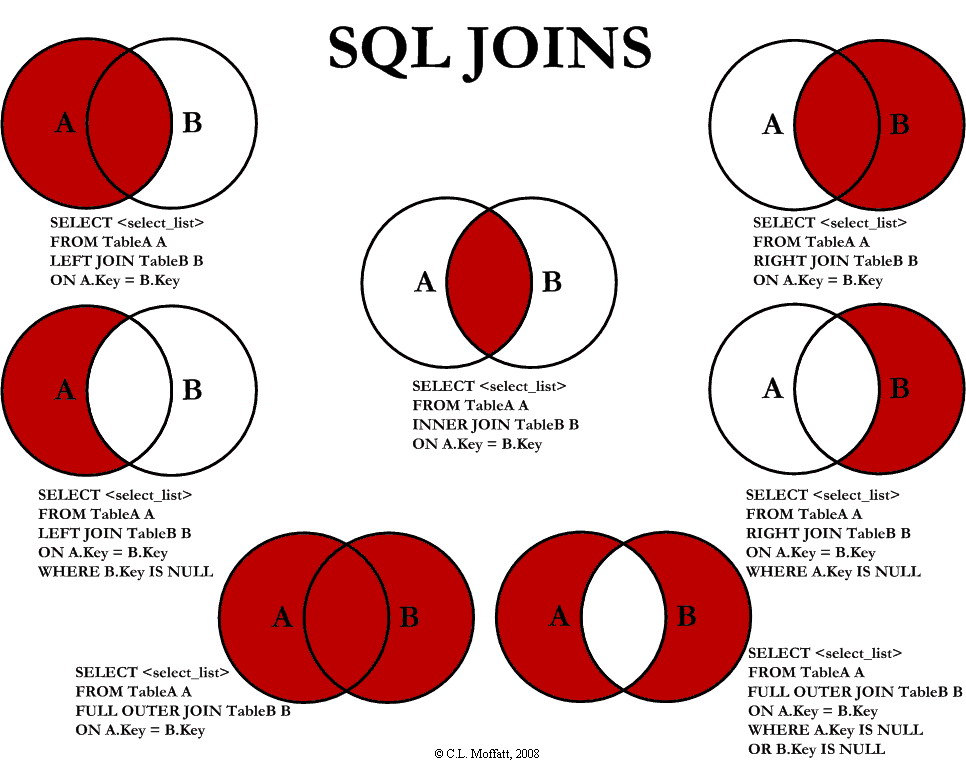Connecting SQL Joins and Set Theory Concepts
Hi there. There is this interesting infographic which relates set theory to table joins in SQL.

One can treat a database table as a set with elements being information within a table.
The set \(A\) refers to table \(A\) and the set \(B\) refers to table \(B\).
Left Join
A left join selects everything from \(A\) including the intersection \(A \cap B\). If the null part is TRUE then the intersection removed and the \(A\) only part would be selected which is like \(A - B = A \cap B^{c}\).
Right Join
It would be similar with the right join with \(B\) where the intersection \(A \cap B\) is selected as well. If the null part is TRUE then the intersection removed and the \(A\) only part would be selected which is like \(B - A = B \cap A^{c}\).
Inner Join
The SQL INNER JOIN portion of a query combined with select outputs the intersection \(A \cap B\) of tables \(A\) and \(B\).
Full Outer Join
The FULL OUTER JOIN portion of the query take everything from table \(A\), table \(B\) and the intersection \(A \cap B\). If the key in table \(A\) and the key in table \(B\) IS NULL then the intersection \(A \cap B\) is removed.
References
The featured image/infographic is from https://www.codeproject.com/Articles/33052/Visual-Representation-of-SQL-Joins.